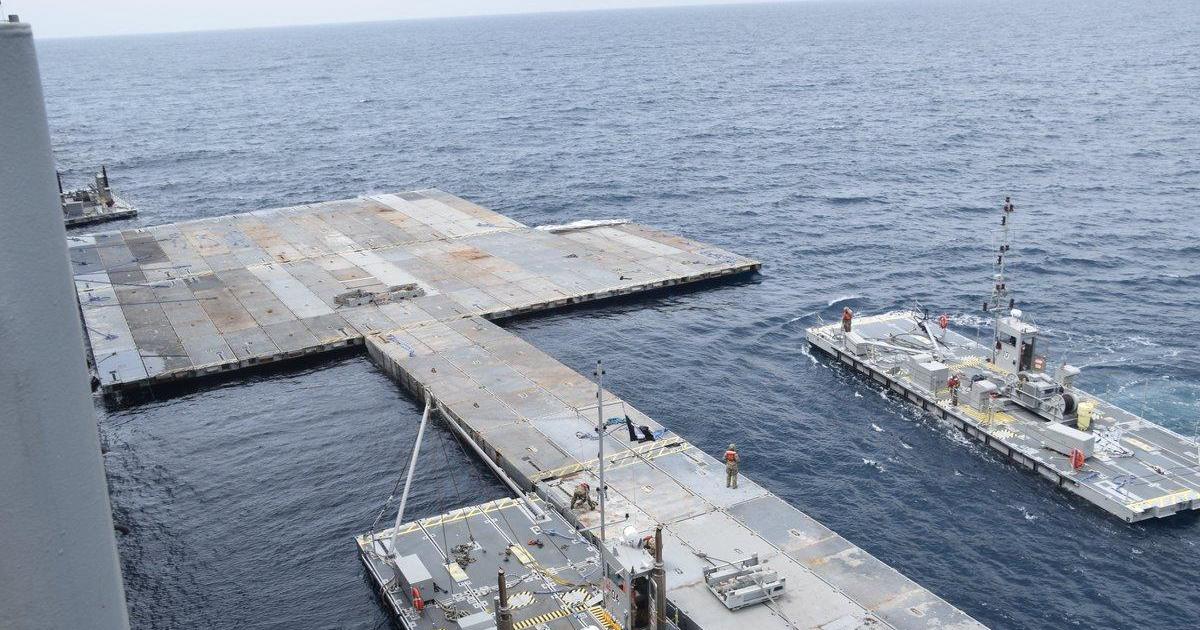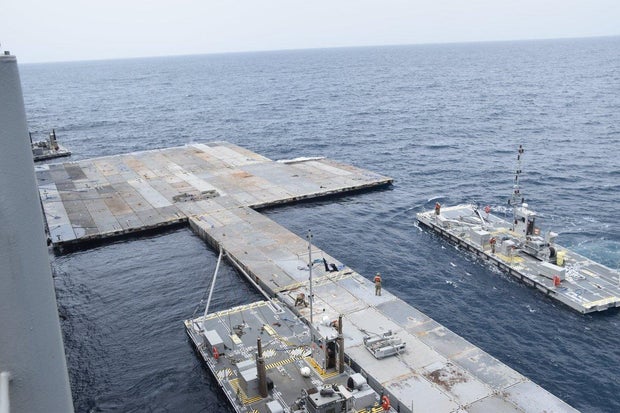The U.S. military on Wednesday began moving into place the pieces of a temporary pier that will be used to transport humanitarian aid into Gaza from the Mediterranean Sea, according to defense officials.
“Earlier today, components of the temporary pier that make up our Joint Logistics Over-the-Shore capability, along with military vessels involved in its construction, began moving from the Port of Ashdod towards Gaza, where it will be anchored to the beach to assist in the delivery of international humanitarian aid,” a defense official told CBS News. The Port of Ashdod in Israel is about 10 miles north of Gaza.
Construction of the two pieces, the floating platform and the causeway, was completed last week, but weather had delayed the final movement. With the pieces now moving into place, the temporary pier could be operational in the coming days and as early as Thursday, per a defense official.
Gaza’s need for more food and supplies has only grown in recent weeks as Israel appears to be ready to launch a major offensive against the southern city of Rafah. USAID Response Director Daniel Dieckhaus said that 450,000 Gazans have fled Rafah since May 6.
“Humanitarian actors are facing significant challenges getting aid into Rafah given the closure of critical border crossings as well as accessing warehouses and distributing aid due to the deteriorating situation,” Dieckhaus told reporters on Wednesday.
Department of Defense
The Biden administration has said the corridor will increase the amount of aid getting in, but the pier is not meant to replace the entry points by road, which are far more efficient for bringing aid in quickly.
The flow of aid through the corridor is expected to start in Cyprus, where it will be inspected and loaded onto ships to travel about 200 miles to the floating platform in the eastern Mediterranean. Once it arrives, the aid will be transferred by U.S. military vessels to the causeway attached to the coast of Gaza. From there, trucks driven by a third party — not U.S. troops — will take the aid into Gaza.
The Israeli Defense Forces, according to the Pentagon, are providing security on the beachhead, and the United Nations is coordinating the delivery of supplies to people in Gaza.
Initially, the corridor is expected to deliver about 90 trucks worth of aid a day, ramping up to 150 per day once it reaches full capacity, defense officials said in a briefing late last month.
Vice Admiral Brad Cooper, the deputy commander of U.S. Central Command, told reporters there are hundreds of tons of aid ready to be delivered once the corridor is up and running, and thousands of tons in the pipeline.
The Pentagon estimates the cost of the corridor is about $320 million.
President Biden announced the maritime corridor during his State of the Union address in March. After pledging to provide a pier, he said, “To the leadership of Israel I say this — humanitarian assistance cannot be a secondary consideration or a bargaining chip. Protecting and saving innocent lives has to be a priority.”
Mr. Biden has said no U.S. troops will step foot in Gaza. There are about 1,000 U.S. service members devoted to the maritime corridor operation just off the coast.

